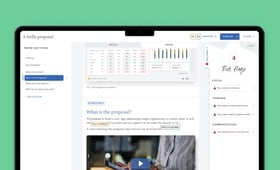Board meetings are typically quieter than rock concerts, but there are similarities. When Coldplay or Taylor Swift play to 70,000 baying fans, they don’t just turn up and ask if anyone’s got an amp. They and their team prepare meticulously to ensure a smooth show — and the same discipline applies to effective boards.
Every director and board will have their own ways of preparing for board meetings, but there are common patterns and pain points. Board Intelligence recently discussed these with 13 experienced chairs and non-executives, who shared their views on what effective board meeting preparation looks like, and how AI could help improve the process for all concerned.
The fundamental challenge that surfaced is that directors are time poor. They only have a few hours, once a month or perhaps once a quarter, to unpick and progress the most important issues facing the business, no matter how many or complex these are. Non-executive directors also do so without the benefit of working in the business full-time, typically spending up to half a day getting up to speed ahead of each board meeting.
Many of the key preparation tasks and pain points therefore relate to maximising directors’ time — one of the areas in which generative AI can be most helpful.
Step 1: Refresh your memory
Preparation
Understanding how you can add value to a board meeting begins with knowing what happened in previous board meetings. Some of our interviewees start by reviewing the minutes and their personal notes from the last meeting, to refresh themselves on key context and identify unresolved items before they dive into their pre-read materials. Others refer back to these while reading the board pack.
Download our board meeting preparation checklist to make sure you’re covering all the bases when you prepare for your next meeting.
Pain points
Directors sometimes don’t know about or recall previous discussions on a topic, particularly if these happened some time ago. Finding, accessing and searching the minutes, agendas, and board papers from previous meetings is also challenging — especially when they’re stored in shared folders or email inboxes. One director raised a similar difficulty in finding strategy and governing documents, with those available often badly organised and not up to date.
How can AI help?
If all the relevant materials are saved in a central, well-organised place, like a board portal, then a well-tuned, secure AI can give an accurate and digestible recap of previous meetings, cross-reference data from other company documents, or answer the question, ‘when was the last time we discussed this and what did we say’. However, if it’s been trained on what matters in board meetings, it can go further, actively flagging unresolved issues or relevant prior conversations, unprompted.
Step 2: Skim and prioritise
Preparation
Some parts of a board pack require more attention than others. Directors therefore need to decide quickly which parts of which papers to focus their preparation on. Several directors start by skimming executive summaries to determine which papers are strategic rather than administrative, which are material and what is expected of them (decision, approval or attention).
Pain points
Not every organisation insists on contributors adding executive summaries to board papers, and the summaries that are there are often vague, inaccurate and lacking insight, or fail to make a clear, specific ask. Indeed, some directors prefer to come to their own conclusions rather than reading a poor summary, in case it obscures potentially important issues.
How can AI help?
So long as it knows what to look for, AI can help directors to know where to focus their attention by summarising the key messages and asks in each paper, while also identifying potential issues such as strategic risks, time-sensitive opportunities, or financial red flags that may not be obvious at first glance.
Step 3: Deep digest
Preparation
There is no substitute for reading the board pack thoroughly. One director highlights and annotates papers with key observations as she goes through, mulling implications for a few days. She also considers what isn’t in the pack, and why, requesting missing information and seeking clarification from contributors before the board meeting.
Pain points
Long, dense, and detailed board packs are a common pain point for directors (as evidenced by long-standing research conducted by Board Intelligence and the Chartered Governance Institute). For many companies, they’re usually anywhere from 200 to 600 pages long, and in large financial services firms they can be much longer. One director described a near competition among paper authors to see who could dump the most data into their board pack.
Badly written papers add to the difficulty, as does excessive jargon. Several directors also complained of board materials that assume deep subject matter or industry expertise, potentially undermining the contribution of non-executives who are there precisely because they have a fresh, outside perspective.
How can AI help?
To lighten directors’ cognitive load before reading a paper, AI can generate a reliable executive summary, outlining its key points and logic. As you’re reading, it can help cut through jargon with plain-speaking contextual recaps, while cross-referencing data with other papers or related documents to highlight recurring themes, risks or performance trends that can be hard to spot when you’re in the weeds.
Step 4: Determine the key questions
Preparation
In effective board meetings, directors arrive with a formed but flexible view of every topic, and a set of questions to probe inconsistencies or biases in management thinking and stimulate new perspectives. Forming these questions takes consideration — one director talked about phrasing questions carefully to avoid defensiveness or grandstanding, for instance. Sometimes boards also seek external insight from other domains to prompt lateral thinking.
Pain points
Good board reporting is strategic as well as operational, looking forward and outwards as well as backward and inwards. When this doesn’t happen, it’s very difficult for directors to engage critically, either because they spend so much of their preparation and board meeting time trying to fill the gaps, or because there’s so much information that they don’t notice what’s missing.
How can AI help?
AI can’t think for you, but it can help you direct closer attention to the most important areas. For example, it could spot logical gaps in papers’ rationale, such as missing stakeholders or neglected options, or sections where there is less candour or forward focus. It can also provide a question checklist, tailored to the paper type, to help ensure nothing obvious gets missed, and to stimulate further critical thinking.
At a glance: how AI can support effective board meeting preparation
|
Preparation step |
Pain point |
How AI can help |
|
Refresh your memory |
Hard to find and search previous minutes, agendas, and papers across scattered systems |
Recap previous meetings, cross-reference documents, and flag unresolved issues automatically |
|
Skim and prioritise |
Executive summaries are often vague, inaccurate, or missing entirely |
Summarise key messages and asks in each paper, identify strategic risks and time-sensitive opportunities |
|
Deep digest |
Board packs are long, dense, jargon-heavy, and assume deep expertise |
Generate reliable summaries, translate jargon, cross-reference data to spot themes and trends |
|
Determine key questions |
Gaps in strategic thinking make it hard to engage critically and ask the right questions |
Spot logical gaps, flag missing stakeholders or options, provide tailored question checklists |
A caveat — and an opportunity for AI
You can’t always throw AI at a problem and expect a solution. To address these pain points, board members need to keep their wits about them and use AI tools wisely. That means ensuring the tools they choose are fit for purpose.
The AI we describe above isn’t a generic tool, like ChatGPT or Grok. Generic AI tools haven’t been trained on board papers or the thinking processes of board directors, because these aren’t on the internet — they’re confidential and contextual.
The AI we describe is Insight Driver, which we’ve built on 20 years of insights into the science of board effectiveness. Available within our board portal, it can access all your key information and, crucially, keeps that information within a secure board portal environment. And because it’s embedded with real-world best practice, shaped by insights from thousands of boards around the world, board members can rely on it to ease the burden of preparing for board meetings — so they can bring their best on the day.
With Insight Driver, see what matters in your board materials, spot gaps in data or reasoning, and use AI to generate value rather than abstracts.
See Insight driver


